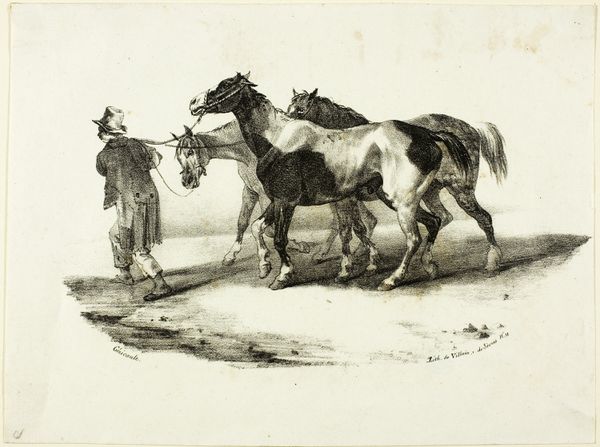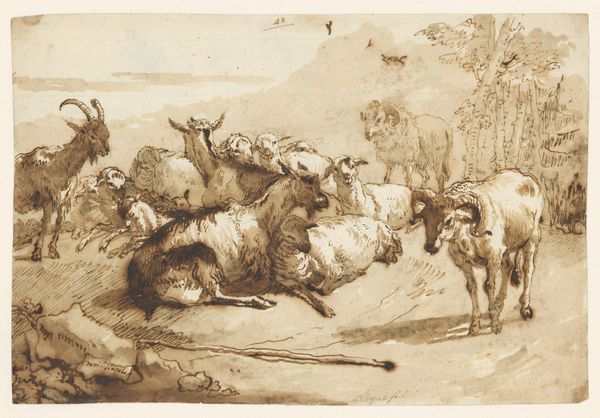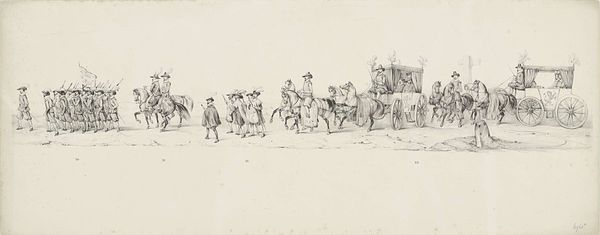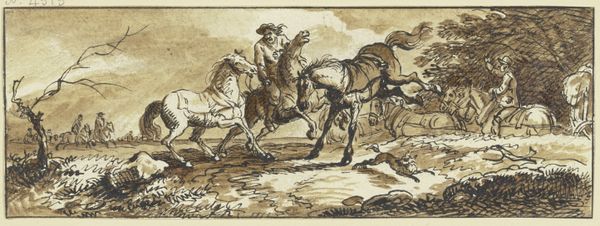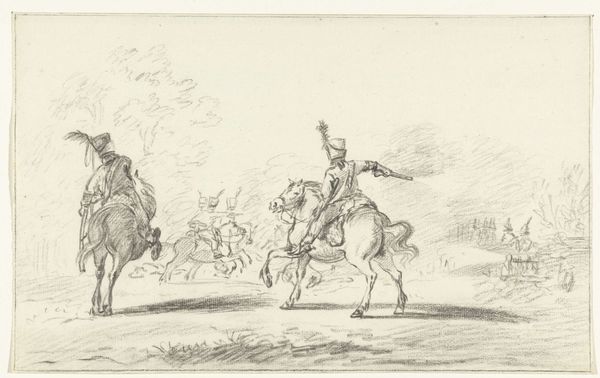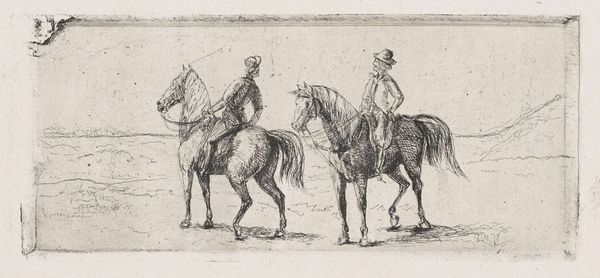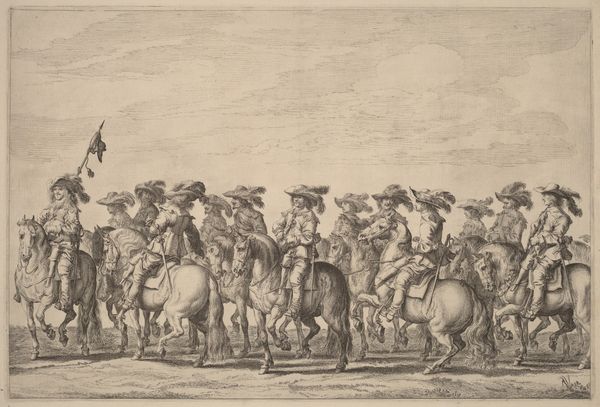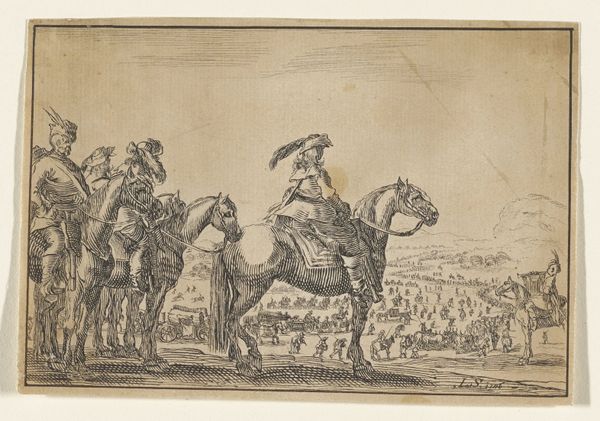
drawing, pencil
#
drawing
#
animal
#
pencil sketch
#
landscape
#
pencil
#
academic-art
#
watercolor
#
realism
Copyright: Public Domain: Artvee
Editor: This is "Study for ‘The Horse Fair’" by Rosa Bonheur, made in the 19th century, probably using pencil. The sketch is just teeming with energy, you can practically feel the pounding hooves. What do you see in it? Curator: Well, the energy you feel speaks to the power dynamics present in 19th-century society, right? Bonheur challenged those norms simply by being a successful female artist depicting masculine subjects. Think about the Salon, and the types of art deemed acceptable at the time. Editor: So, the subject matter itself was a statement? Curator: Absolutely! A woman artist specializing in animal paintings, particularly horses, defied expectations. Now, how might this preparatory sketch have been received differently compared to the finished painting? Editor: Perhaps the sketch allowed more freedom and was considered less "public" than the finished work? Curator: Precisely. Its existence lets us glimpse Bonheur's process, making visible her understanding of anatomy. Her access to this knowledge was another challenge of convention in itself, which makes one question what barriers existed then, and how are they visible now in contemporary artistic practices. Editor: It is also interesting how this work can spark social questions like these, regardless of it being a quick sketch or the final, carefully constructed and studied work. Curator: Exactly, seeing the art world as something bigger than itself opens up new doors for discussion! Editor: Thank you. This really changed my perspective! Curator: My pleasure. Art’s never created in a vacuum. Keep that in mind and it can lead to many enriching discussions.
Comments
No comments
Be the first to comment and join the conversation on the ultimate creative platform.
